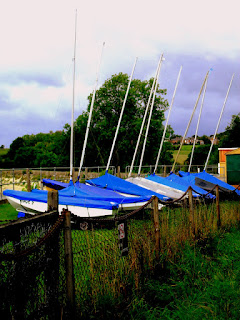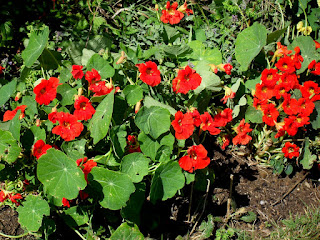Our garden backs on to open fields where cows graze and field mushrooms flourish in autumn.
In medieval times this was where the old Brabazon family built their manor house.
The land dips down steeply and this was where the old water mill was and the fishponds,
which until a few years ago was still filled with water.
The farmer who owned the land dug out a trench to let the water escape as it was a hazard
for the grazing animals.
The area is now covered in Horsetails
which is an ancient, primitive, non-flowering herb, the young heads of which
can be eaten boiled. It's minerals and salts enrich the blood and strengthen hair and nails.
The land was shaped by glaciers rolling through the valleys, and all along the bottom
are streams and ponds which reflect the sky and trees.
At this time of years almost all of the wild flowers have gone to seed.
I found a few whilst walking
Yarrow
(Achillea millefolium)
In folklore, Chiron the centaur, is supposed to have taught Achilles about the
healing virtues of yarrow, and he used it extensively
to keep his armies healthy, so much so, that the plant took on his name.
It has many healing properties, but the peppery leaves can also be finely chopped
into salads and the flowers used to flavour liqueurs.
Autumn Hawkbit
Meadowsweet (also called Queen of the Meadow)
The almond-scented cream flowers add flavour to herb wines, jam and stewed fruit.
Herbalists use flower tea for stomach ulcers and headaches.
Meadowsweet was sacred to the Druids and the favoured strewing herb
of Elizabeth I.
Oxford Ragwort
Supposedly brought over by the Romans, for what reason, I don't know.
This plant is fatal for grazing animals and the whole plant should be pulled out.
Dead ivy vines lay at the foot of a tree.
In the Domesday Book this area where I live now only had eight families living here, no more than 30 inhabitants working the land. The purpose of the village was simple.
To keep the peasants alive so that they could keep the land in good heart
and pay dues to the manorial lords and thus to the Crown.






















































